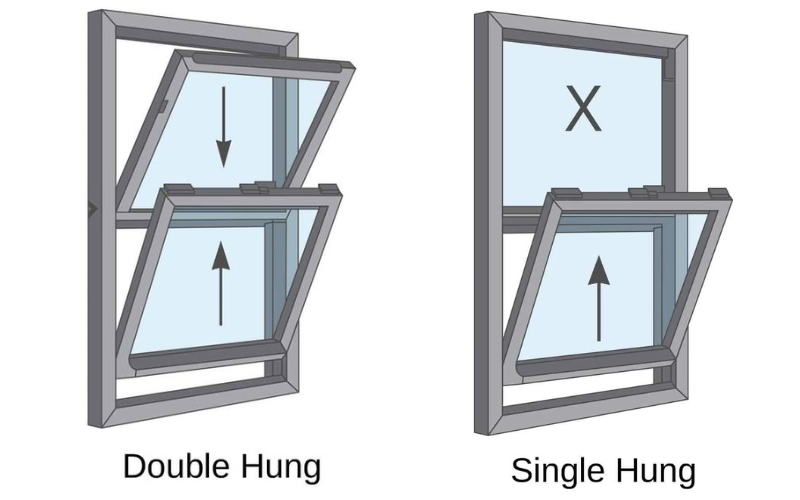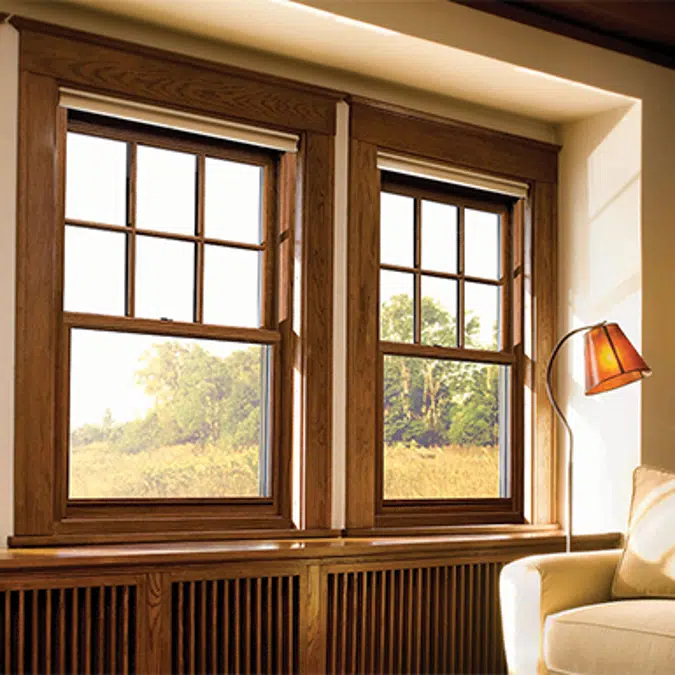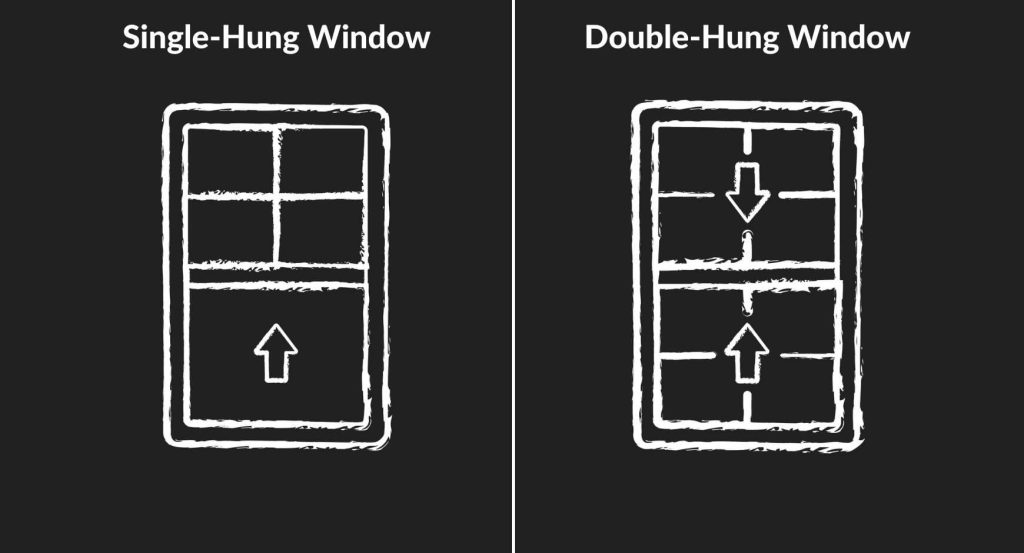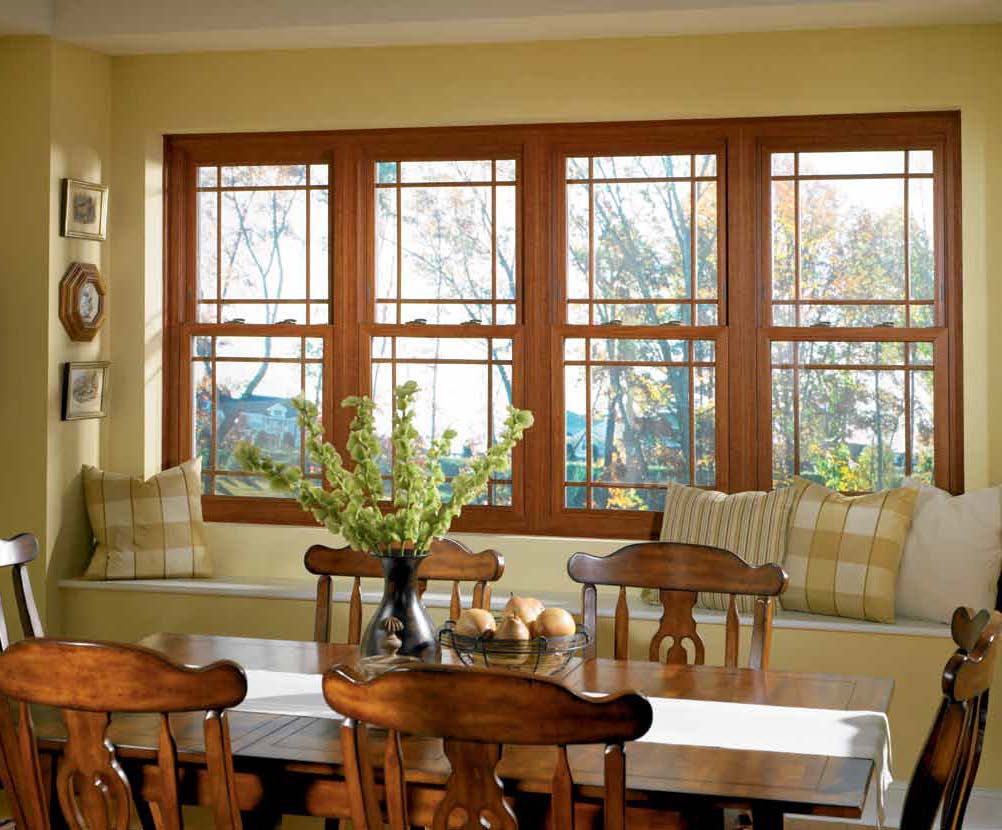Classic charm meets modern comfort with double-hung windows. These versatile fixtures not only let you tailor airflow and light, but also look great on nearly any home style—and they’re simpler to care for than you might think. Whether you’re installing fresh units in new construction or swapping out decades-old frames, here’s a friendly guide to everything you need to know about double-hung windows: why they’re a smart pick, which materials shine, and when repair gives way to a full replacement.

Why Double-Hung Windows Shine
Customized Airflow
Slide the top sash down to let hot air escape or raise the bottom sash for a cool breeze. It’s a natural two-way ventilation system that works year-round.
Hassle-Free Cleaning
Tilt each sash inward, and you can wash both sides of the glass from inside—no ladders, no acrobatics, no excuses.
Timeless Elegance
With their clean lines and optional divided-light grids, double-hung windows suit everything from historic bungalows to sleek, contemporary homes.
Space-Saving Operation
Because they move up and down instead of swinging out, you won’t have to worry about obstructing walkways, patios, or landscaping.
Energy-Saving Upgrades
Pair today’s double-hung frames with Low-E glass, argon fills, and tight weatherstripping, and you’ll see real savings on heating and cooling.
Choosing the Right Frame Material
- Vinyl
Pros: Budget-friendly, nearly maintenance-free, moisture-resistant.
Cons: Color options are fixed; some vinyl can warp under extreme heat. - Wood
Pros: Natural warmth and beauty, excellent insulation.
Cons: Requires repainting or staining every few years to prevent rot. - Fiberglass
Pros: Rock-solid stability in any climate, paintable to match trim.
Cons: Higher upfront cost—but built to last for decades. - Composite/Clad
Pros: Real wood interior, low-maintenance metal or vinyl exterior.
Cons: Premium pricing and fewer local installers.

At-a-Glance Performance Comparison
| Feature | Vinyl | Wood | Fiberglass | Composite/Clad |
|---|---|---|---|---|
| Cost per Window | $200–$400 | $300–$600 | $400–$700 | $500–$900 |
| Maintenance | Very Low | Medium | Low | Low |
| Insulation (U-Factor) | 0.30–0.35 | 0.25–0.30 | 0.20–0.25 | 0.22–0.28 |
| Durability | High | High (with upkeep) | Very High | Very High |
| Color Options | Many | Paint or stain | Paintable | Many |
| Warranty Length | 20–30 yrs | 10–20 yrs | 20–30 yrs | 15–25 yrs |
Must-Have Features
- Tilt-In Sashes for easy cleaning and maintenance.
- Low-E Glass & Gas Fills to block UV rays and boost insulation.
- Multi-Point Locks for tighter seals and enhanced security.
- Integrated Between-Glass Blinds (optional) to banish dust and simplify upkeep.
- Grille Patterns—colonial, prairie, or custom—to echo your home’s architecture.
Repair or Replace?
Consider Repair When:
- Balances are off and sashes stick, but frames are solid.
- Weatherstripping has worn thin but the glass and frame remain intact.
- You need to preserve a historic or custom wood frame.
Opt for Replacement When:
- Seals have failed and panes fog or leak.
- Frames show rot, warping, or significant air leaks.
- You’re after the latest energy ratings or a fresh aesthetic upgrade.
FAQs Answered
Are double-hung windows energy efficient?
Absolutely—modern models with Low-E coatings, argon fills, and precision seals easily meet ENERGY STAR® standards.
How often should I care for them?
Clean tracks and sashes twice yearly, inspect weatherstripping annually, and refinish wood frames every 3–5 years.
Can I handle installation myself?
Experienced DIYers can tackle simple retrofit kits, but full-frame installs—especially in load-bearing walls—are best left to professionals.
What’s their lifespan?
With proper care, vinyl and fiberglass windows often last 25–30 years; well-maintained wood frames can exceed 20 years.
Do I need a permit to replace windows?
Most municipalities waive permits for like-for-like swaps. But if you change the window opening size or alter your framing, check local codes first.

Double-hung windows strike a perfect balance between style, function, and simplicity. Armed with the right material choice, feature set, and maintenance plan, you’ll enjoy bright, breezy rooms and lasting energy savings for decades to come.
